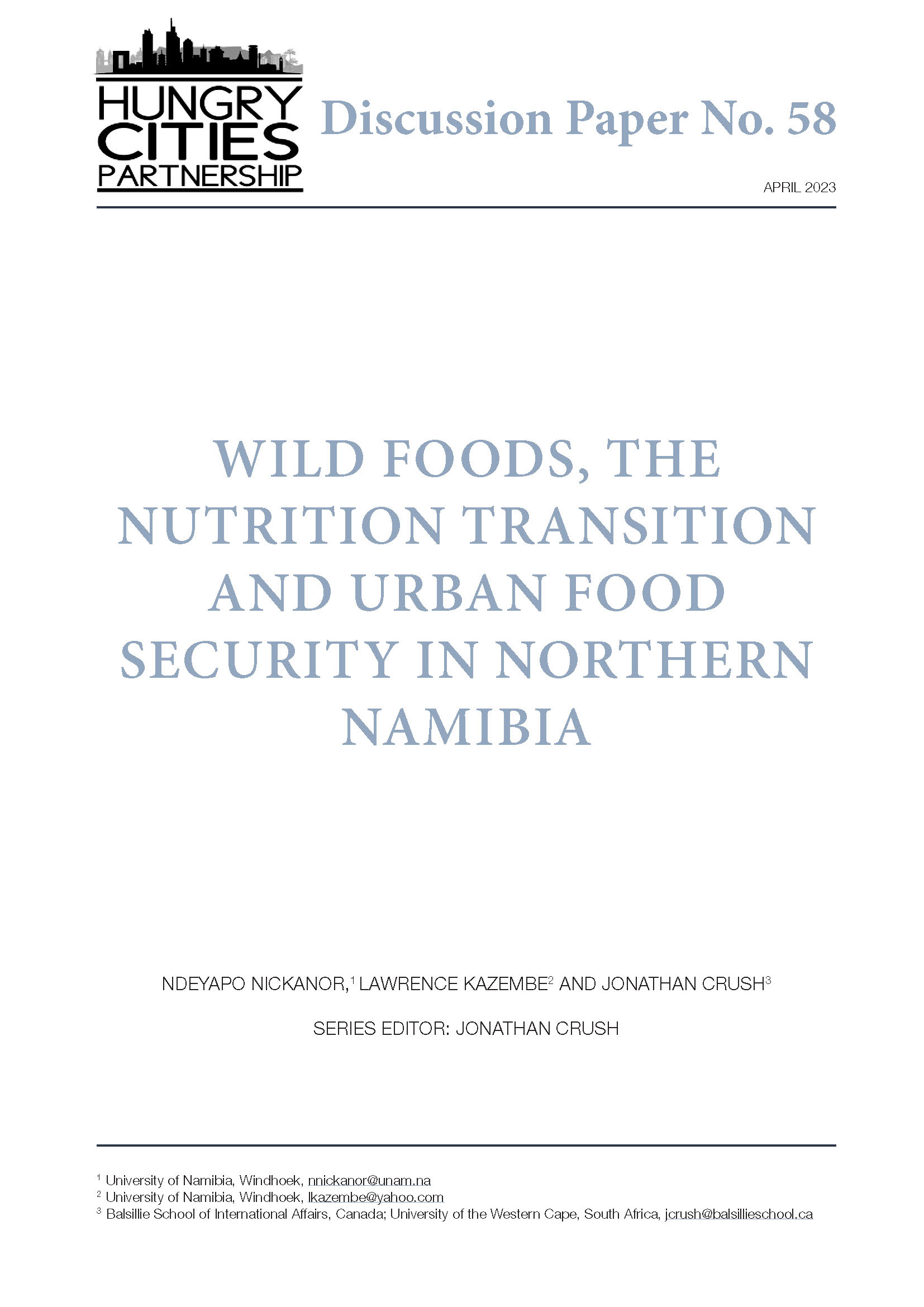Rapid urbanization and food system transformation in Africa have been accompanied by growing food insecurity, reduced dietary diversity and an epidemic of non-communicable disease. While the contribution of wild and indigenous foods (WIF) to the quality of rural household diets has been of longstanding attention, research on their consumption and role amongst urban households is much more recent. This paper focuses on the consumption of WIF in three towns in northern Namibia with close ties to the surrounding rural agricultural areas. Based on data from a household survey of food sourcing and consumption patterns in 2018, the paper shows that most households do consume wild foods acquired through informal market channels or sent by rural family members. These WIF food remittances play different roles in the food security of different types of households. Poorer, food insecure households tend to consume WIF more frequently and that while these foods play a role in diversifying diets, they are insufficient to lift these households out of chronic food insecurity. Higher-income households consume wild foods less frequently and more for reasons of cultural preference and taste than necessity. The paper raises several issues for future research including the reasons for continued urban household consumption of WIF, the nature of the supply chains that bring WIF to urban consumers and the impact of climate change on the future supply of WIF to urban areas.

